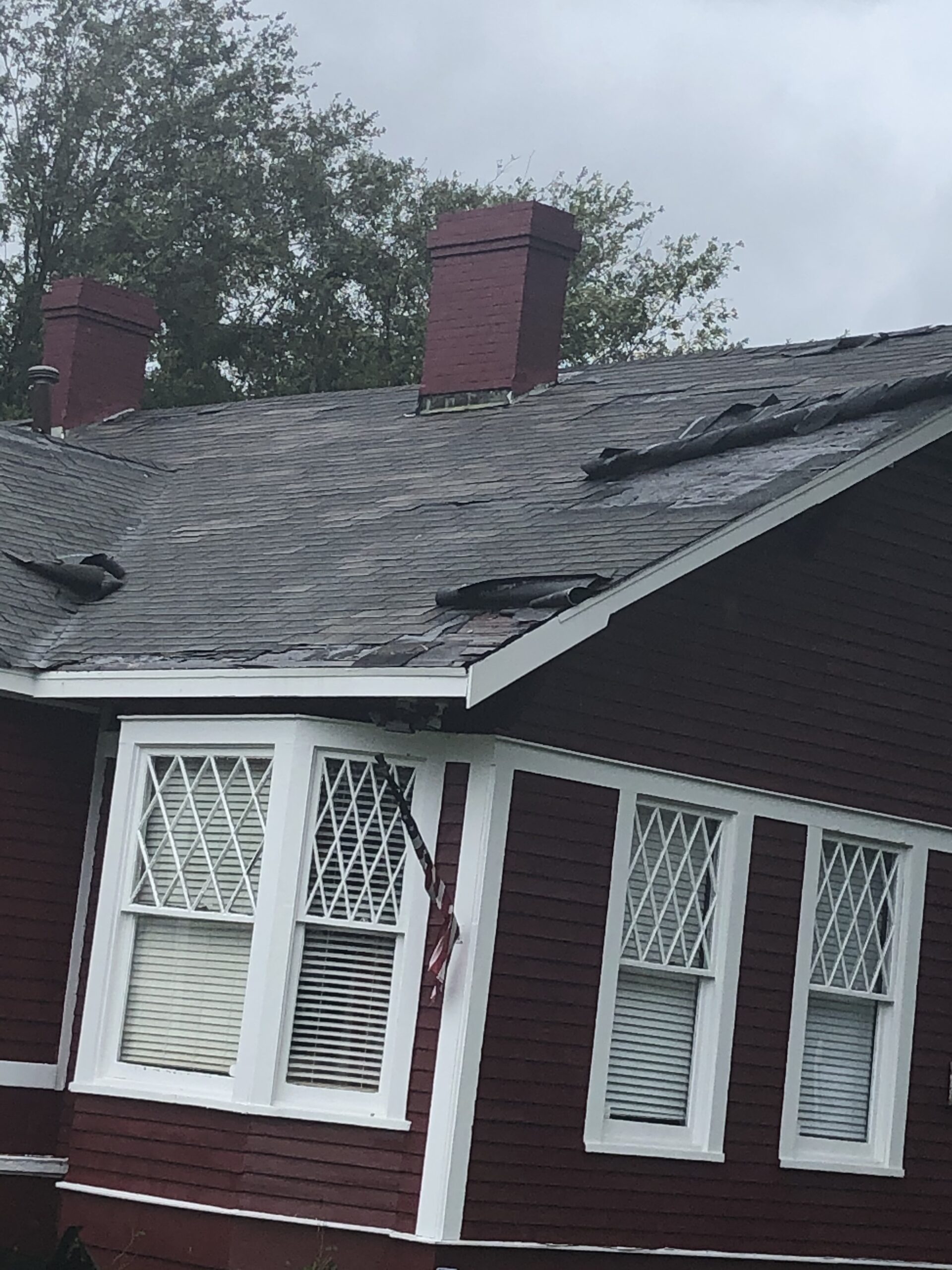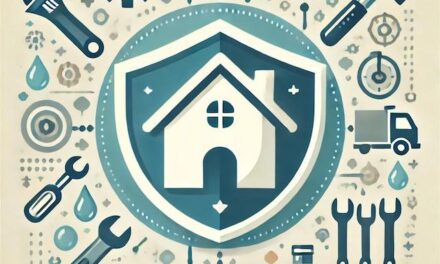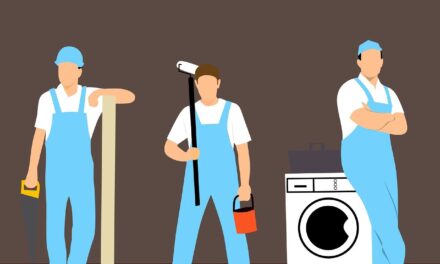To start, I do not sell or repair roofs. That said, let’s discuss the best way to protect your house from damaging hurricane winds and rain. The best roofing for hurricanes and of course the most expensive is a metal roof. Before you start calling for estimates, let’s get into the reasons why not everyone has a metal roof. Asphalt shingle roofs are the most popular choice across the country and the Gulf Coast is not an exception. There is no hurricane-proof roof. but there are many things that can be done to help prevent serious damage.
As I mentioned, I do not sell roofs. I am however, a Real Estate Broker and an investor. It is my opinion that in most cases a metal roof is the best but that does not mean that a well installed roof using other materials that are suited to the environment will not hold up well. Don’t take my word for it, read this article.
Types of roofing materials
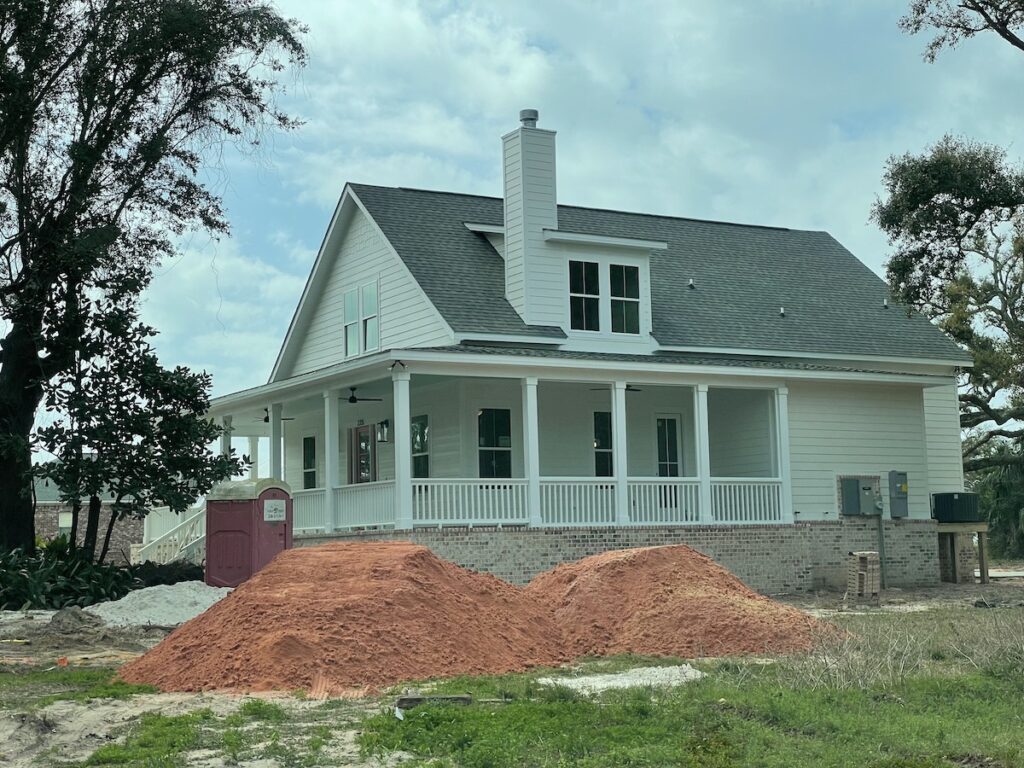
Asphalt shingles are the most popular type of roofing material in the United States. They are relatively inexpensive and easy to install, and they come in a variety of colors and styles. However, asphalt shingles have a lifespan of only 20-25 years. Three-tab shingles have been used for years.
Most knowledgeable individuals believe the best shingles are architectural singles. The reason why architectural shingles are better is that there are two layers of asphalt laminated together. They are a good option. The best type of roof using asphalt shingles are the ones that use class G or Class H high mph types.
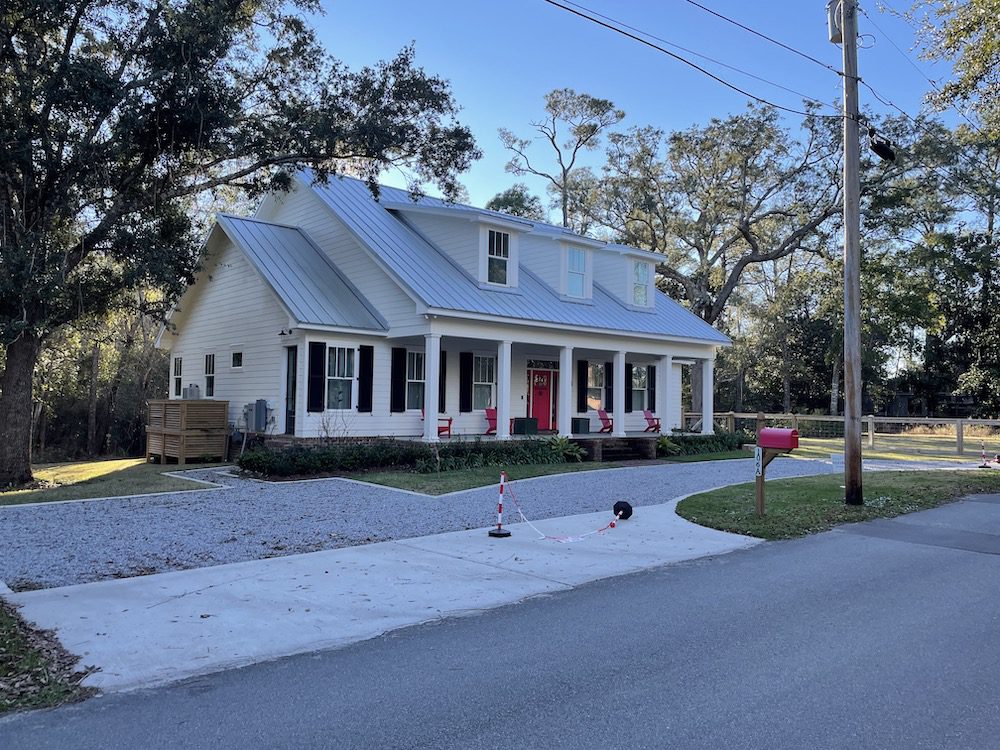
Generally metal roofing is a more durable option than asphalt shingles, and it can last for 50-75 years. Metal roofs are also fire-resistant and energy-efficient. However, they are more expensive than asphalt shingles. Metal roofs are better for gable roofs and hip roofs rather than flat roofs. Metal roofs come with choices. colorbond steel, galvanized steel and stainless steel. Prices vary.
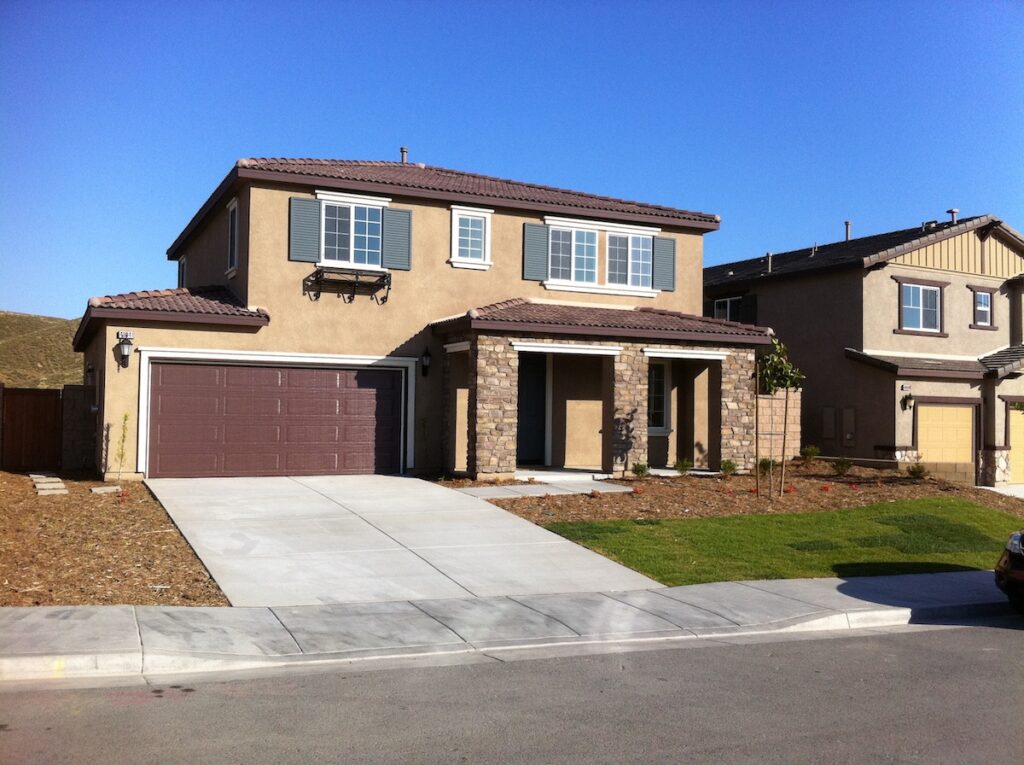
Wood shake roofs are made from thin, split pieces of wood that are nailed to the roof deck. Wood shake roofs are very attractive, but they require more maintenance than other types of roofing materials. They also have a shorter lifespan, lasting only 20-30 years.
Clay tile roofs are made from fired clay tiles that are very durable and fire-resistant. Clay tile roofs can last for 100 years or more, but they are also the most expensive type of roofing material.
Concrete tile roofs are made from concrete tiles that are similar to clay tiles in terms of durability and fire resistance. Concrete tile roofs are also relatively inexpensive, but they are not as attractive as clay tile roofs.
Asphalt shingles are the most popular
As I mentioned above, the best roofing material for houses that are in hurricane-prone areas is generally considered to be a metal roof. I will get more into metal roofs beyond what is discussed above but first, let’s discuss why there are more traditional asphalt shingles used for roofs in hurricane areas than there are metal roofs. Part of the reason is the design of your roof. I will get into that also in a minute.
Before passing over the wood shake, clay, and concrete tile roofs, I want to mention that all types of roofs have their good points and drawbacks. One of the key drawbacks for all types of roofs except possibly metal roofs is color matching. You may not lose your entire roof in a wind storm but if you lose shingles, it will be hard to match the colors. There are several reasons it will be difficult to obtain replacement shingles:
- There is no supply available because they are no longer manufactured
- Shortage of shingles because of the hurricane
- The colors will not match because the roof discolored over the years
- The shape of the tile is not available
A metal roof can be painted so repairing a metal roofing system is fairly simple. The biggest problem after a hurricane is the supply of materials. Metal panels will be in high demand and it may be difficult to find panels to match your roof system.
Wind ratings
Hurricanes come with strong winds and these winds can do damage to roofs. The highest wind-rated roof is a metal roof at 160 mph followed by slate, concrete, and tile roofs. Asphalt roofs start with class A at 60 mph and go as high as class E shingles for 150 mph. While you may choose a high wind rating roofing material, the installation is critical to insure that the wind rating achieves it’s best results in hurricane-force winds.
The American Society for Testing and Materials (ASTM) establishes wind ratings for roofing shingles in the United States. ASTM is an international standards organization that develops and publishes standards for a wide range of materials and products.
The ASTM standard for wind ratings for roofing shingles is ASTM D7158. This standard specifies the procedures for testing roofing shingles to determine their resistance to wind uplift forces.
ASTM roofing wind resistance
ASTM D7158 classifies roofing shingles into five wind resistance classes:
- Class A: Resists uplift at wind speeds up to 60 mph.
- Class B: Resists uplift at wind speeds up to 90 mph.
- Class C: Resists uplift at wind speeds up to 110 mph.
- Class D: Resists uplift at wind speeds up to 130 mph.
- Class E: Resists uplift at wind speeds up to 150 mph.
The wind rating of a roofing shingle is determined by the results of the ASTM D7158 test. The test is conducted on a sample of shingles that are installed on a simulated roof. The shingles are then subjected to wind gusts of increasing intensity until they fail. The wind speed at which the shingles fail is the wind rating of the shingle.
It is important to note that the wind rating of a roofing shingle is only a guide. The actual wind resistance of a roof will also depend on the quality of the installation and the other roofing materials used.
The wind resistance of the roof structure is also important. The slope of the roof is key. The steeper the roof, the more resistant it will be to a wind updraft. It’s the wind uplift that causes the most damage. The heavier the roof the more resistant to wind uplift.
You should choose the roof materials for the type of roof you have. Always consider what happens if there is damage and you need to buy replacement shingles or sheets. Will they be easy to find.
A breakdown of costs
Here is a breakdown of some of the costs involved in replacing a roof:
- Roofing materials: The cost of roofing materials will vary depending on the type of material you choose. Asphalt shingles are the most common type of roofing material, and they typically cost between $300 and $600 per square. Metal roofs are more expensive, but they can last for many years. They typically cost between $500 and $1,000 per square.
- Labor: The cost of labor will also vary depending on the size of your home and the complexity of the job. In general, you can expect to pay between $1.50 and $3.00 per square foot for labor.
- Removal of old roof: The cost of removing the old roof will vary depending on the type of material it is made of. Asphalt shingles are relatively easy to remove, and they typically cost between $1.00 and $2.00 per square foot to remove. Removing a metal roof may more difficult to remove, and they typically cost between $2.00 and $3.00 per square foot to remove.
- Additional costs: There may be other costs associated with replacing a roof, such as permits, inspections, and disposal of the old roof. These costs can vary depending on your location.
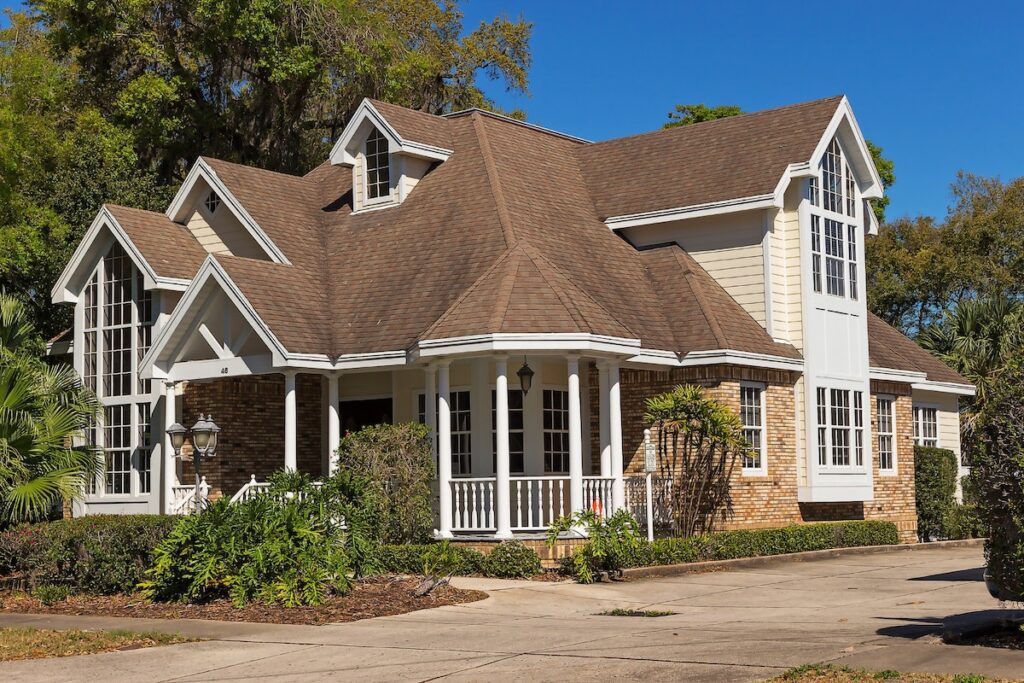
Look at their work
Most roofing contractors can and do install shingle roofs. Fewer install metal roofs. Depending upon the roof you choose, ask the contractor to show you examples of that type of roof. A good thing to do is get the addresses or drive around with the contractor as they show you work they have done.
In general, the cost of replacing a roof will be more expensive if you live in a large home or in an area with high labor costs. However, there are ways to save money on a roof replacement, such as by choosing a less expensive roofing material or by getting multiple estimates from different contractors.
It is important to get multiple estimates from different contractors before making a decision about who to hire to replace your roof. This will help you to ensure that you are getting the best possible price for the job.
Example of metal roof prices
It’s not possible to give prices for the types of metal roofs but we can give you a range. Galvanized steel may cost between $10,000 and $15,000 for a 1,700 Square are foot house.
A colorbond steel roof may range from $12,000 and $20,000 for a 1,700 square foot roof. As mentioned above, prices depend greatly on the pitch of the roof and roof features such as vents, fire places etc.
Stainless steel is the most expensive option of metal roofs. You can expect to pay from $15,000 to $25,000 for a 1,700 square foot house. Again, these prices for metal roofs are just a ball park. You will need a quote to determine the actual price that you will pay for your house. I suggest that you contact your insurance agent and confirm discounts for various types of roofs.
Architectural Shingle roof prices
Architectural shingle roof costs will vary just as they do for metal roofs. It’s about angles and features. Additional work must be done around chimneys and vents. Also, if the underlying plywood is damaged, that adds to the cost.
Architectural shingles are usually priced based upon the length of the warranty. 30-year shingles may cost between $8,000 and $10,000 for a 1,700 sq ft house. 40-year shingles can start at $10,000 through $12,000 and 50-year shingles from 12,000 and $15,000. These are all for a 1,700 sq ft house.
Factors that affect pricing for all roof types are:
- Cost of roofing materials
- Cost of labor
- Cost of permits and inspections
- Cost of removal and disposal of roofing materials
- Cost of ancillary items such as plywood, facia repair, number of vents and chimneys.
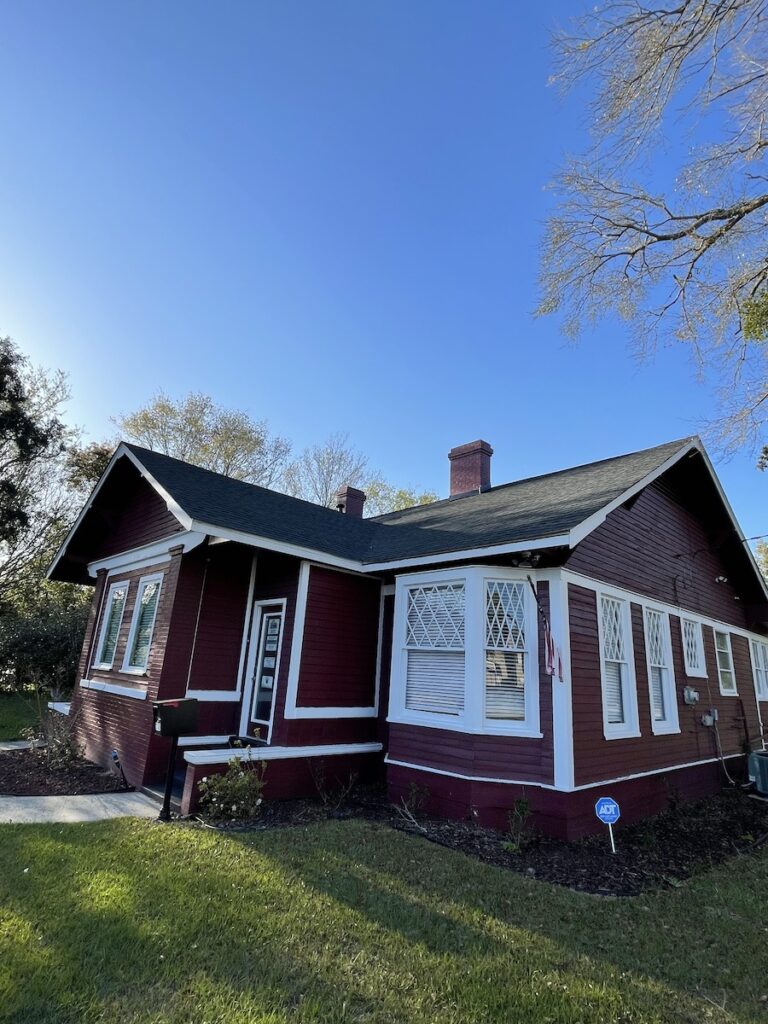
Insurance considerations
The percentage discount for metal roofs vs shingles varies depending on the insurance company and the specific location of the home. However, in general, homeowners can expect to save between 5% and 20% on their homeowners insurance by installing a metal roof.
For example, State Farm offers a 10% discount on homeowners insurance for homes with metal roofs in areas that are prone to hail or wind damage. And, Farmers Insurance offers a 15% discount on homeowners insurance for homes with metal roofs in areas that are prone to wildfires.
It is important to note that not all insurance companies offer discounts for metal roofs. And, the percentage discount that you receive may depend on the specific type of metal roof that you install. For example, standing seam metal roofs typically qualify for higher discounts than corrugated metal roofs.
If you are considering installing a metal roof, it is important to contact your insurance company to see if they offer a discount. You can also compare quotes from different roofing contractors to get the best price on a metal roof.
Discounts for metal roofs
Here is an example of how much you might save on your homeowners insurance by installing a metal roof:
- If your homeowners insurance premium is $1,000 per year, and you receive a 10% discount for installing a metal roof, you would save $100 per year.
- If your homeowners insurance premium is $2,000 per year, and you receive a 15% discount for installing a metal roof, you would save $300 per year.
Over the course of a 20-year mortgage, you could save thousands of dollars by installing a metal roof and receiving a discount on your homeowners insurance.
You must consider the cost of wind and hail insurance if you live in a hurricane area. The cost of wind and hail coverage is based on a number of factors including:
- The type of roof on the house e.g. roof slope
- Age of the roof. Roofs that are more than 20 years old will have higher premiums. Some insurance companies will adjust for metal roofs that have a longer life.
- Condition of the roof. Is the roof and the underlying structure sound, not leaking or damaged?
- Size of the home/roof. Larger is more expensive
- Claim history. Not your history but the history of the house. The previous owner may have filed a claim which can cause your policy to increase in cost.
Example of a form used by StateFarm® customers to secure a discount
Inspect your roof periodically
When considering how to best protect your house from a major storm and torrential downpours, its important to have your roof inspected periodically. Roofers use drones now to see your roof from various angles. An inspection can add to your pease of mind that you have a hurricane proof roof. Or at least its hurricane resistant.
A professional roofing contractor can provide a free estimate for the types of roofing materials you may be interested in. Roofing solutions offered by contractors tend to be those that they specialize in. Some roofing contractors can install any type of roof, others specialize in metal or tile or asphalt.
Reading this article is an excellent choice for a place to start your research. Ultimately, you the home owner will make the final decision about hurricane protection. You will choose the best roof material for your property.
Considerations
Here are some suggestins to consider when weighing the right roofing material for your house:
- Budget: The cost of roofing materials can vary greatly, so it is important to factor in your budget when making a decision.
- Location: The climate in your area will affect the type of roofing material that is best suited for your home. For example, if you live in an area with high winds, you will need a roof that is more wind-resistant.
- Style: The style of your home will also affect the type of roofing material that you choose. For example, if you have a traditional-style home, you may want to choose a roof that is made of asphalt shingles or slate.
- Durability: The durability of the roofing material is also important to consider. You want to choose a roof that will last for many years and withstand the elements.
- Maintenance: The amount of maintenance required for the roofing material is also a factor to consider. Some roofing materials, such as metal roofs, require less maintenance than others.
- Energy efficiency: If you are concerned about energy efficiency, you may want to choose a roofing material that is energy-efficient. Some roofing materials, such as metal roofs, can help to keep your home cooler in the summer and warmer in the winter.
Additional factors to consider
Ultimately, the best type of roofing material for you will depend on your individual needs and preferences. It is important to weigh all of the factors involved before making a decision.
Here are some additional factors that may be important to consider:
- Fire resistance: If you live in an area that is prone to wildfires, you will need a roof that is fire-resistant.
- Noise reduction: If you live in a noisy area, you may want to choose a roof that can help to reduce noise.
- Environmental impact: Some roofing materials are more environmentally friendly than others. If you are concerned about the environment, you may want to choose a roofing material that has a low environmental impact.
About roofing warranties
Material manufacturers offer warranties on their roofing materials, some up to 50 years. The catch is that the the materials must be installed correctly. Not all roofing companies employ experienced roofers who are following the manufacturers requirements for installation. Also, the manufacturer only warrants the materials not the labor.
Local installers offer their own labor warranties. This is where it’s important to compare labor warranties between installers. Get references, call them. Sometimes even when a roof is installed correctly, things happen and leaks appear. How fast will your contractor respond?
And those named storms. A named storm can void a manufactures warranty under their clause “damage caused by acts of god”. Some may waive the “acts of god” if the roof was property installed. If you have recently installed a roof and a storm causes damage, call your installer and ask if they can help. Have them check with the roofing material manufacturer.
Insurance for named storms feature a hefty “co-pay”. It’s important to reduce the cost of repair or replacement by using any warranties that are available. Taking money from an insurance company for repairs puts a tag on your house for future insurance companies. There will be a permanent record of your claim with will affect future costs.
Sources
Can Roof Type Raise My Homeowners Insurance Rate?: https://www.progressive.com/answers/how-roof-type-impacts-insurance/
Roofing Materials Home Insurance Discounts | Easy Free Online Quotes – State Farm: https://www.statefarm.com/insurance/home-and-property/homeowners/discounts/roofing-materials
This article may be of interest about living on the Gulf Coast with storms and hurricanes. Also, this article may be helpful Live in a wind area: Replace your old roof now!.
Discover more from RetireCoast.com
Subscribe to get the latest posts sent to your email.

